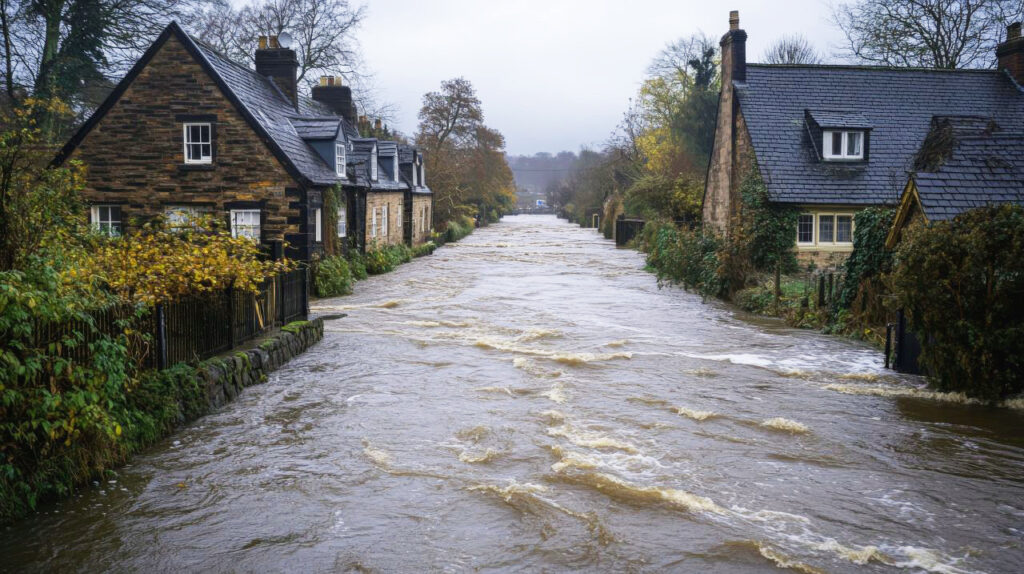Flood Damage Restoration – Roman Style!
Save Your Heritage Building from Flood Damage – Roman Style!
I thought I’d share this case study with you, because it illustrates what to do and what not to do when your old or listed building floods.
The story started in 2023 when after a period of intense rain London drains couldn’t cope with the volume of water and certain parts of this beautiful Grade 1 listed property flooded.

The building
As expected, the insurance company followed “standard procedure” and sent in a team to remove the plaster, dry the walls with big blowers and re-plaster them with a type of cement plaster and gypsum finish.
It all sounds good so far, except that just after a few months unsightly damp patches appeared and the plaster started to crumble.
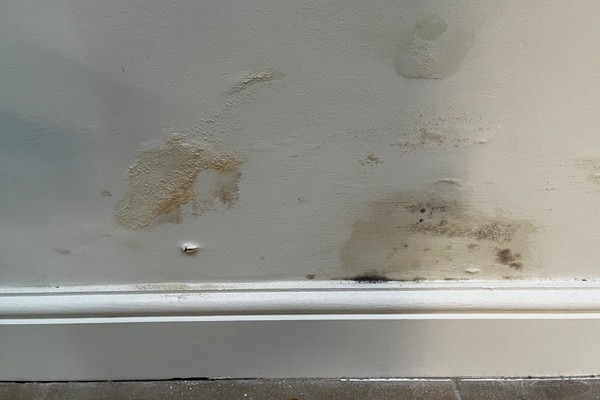
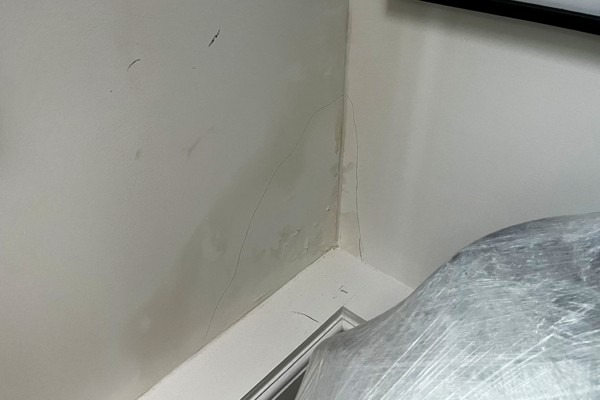
This is when we got involved, to investigate and remedy the situation.
What went wrong?
You might have heard that old buildings are different. It is needless to say that one would not use cement and gypsum plasters in a Grade I Listed building. Beyond that, there were two things that were not taken into consideration:
1: The property has a thick brick masonry (about 500mm), which absorbs much more water during a flood than an average brick wall
As a direct consequence, it will also take much longer to dry. In practical terms, one might be fooled to believe that the wall has dried out because the surface feels dry. What is happening during the drying of thick walls is that after a month or two the surface can look dry, but the core of the wall is still wet – which will migrate to the surface and cause the surface to become damp again once the blowers are turned off.
2: The masonry has a high salinity, and the saltier the wall the slower it dries out
Old walls, including this one, which do not have a damp proof course, become salt contaminated over the decades or centuries. The base of the wall becomes loaded with salt crystals, as a consequence of rising damp bringing up nitrates (a type of salt) from the soil in a dissolved form. Moisture can evaporate but salts crystallise and deposit. A building fabric, which is older than 80-100 years can be expected to have accumulated significant salt contamination, which slows down evaporation significantly. (Laboratory tests show that a salt contaminated masonry dries 4-8 times slower.)
Simply put, drying out thick, salt-contaminated masonry can take much-much longer than an average masonry without salt contamination. Then the wall was plastered with a non-breathable cement plaster, which trapped the residual moisture inside the masonry. While the above approach (drying the wall with blowers and re-plastering with cement and gypsum) might work on newer buildings, old lime-and-brick or lime-and-stone architecture requires a different approach.
Flood Damage Restoration of Old and Listed Buildings
We presented our findings and recommendations to the insurance company, who verified them and approved the conservation-friendly approach below. Let me walk you through it:
1: Our team came in and removed any cement or gypsum plasters,
… which prevented the wall from exhaling its moisture content through its natural moisture management process, which is its BREATHABILITY!
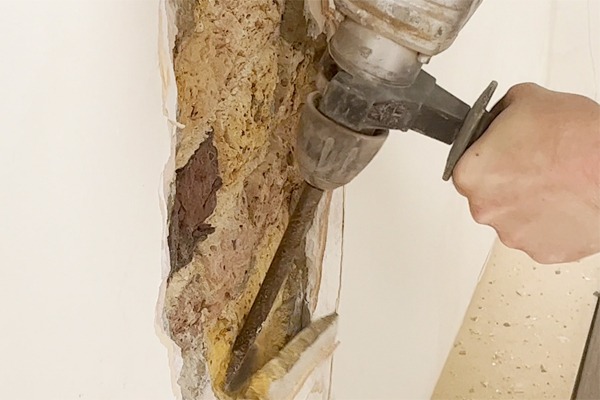
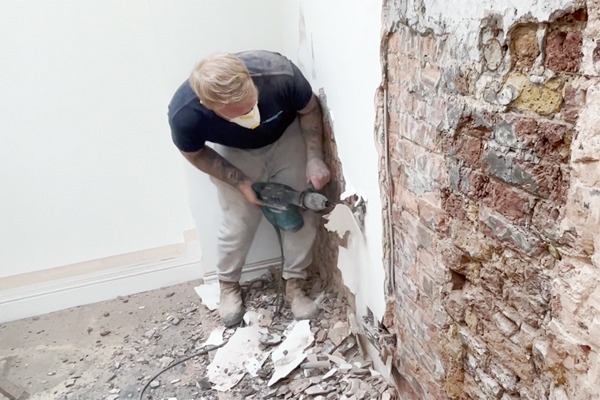
Given the thickness and salinity of the masonry, drying it would have taken several months, possibly up to a year, so we did not attempt this. Instead, we were using special breathable lime plaster mixes, which would not suffer cosmetic damage (won’t be crumbling or salting or produce damp patches) while the wall is releasing its moisture content. Please note, ordinary lime plasters do breathe, but they also suffer moisture damage as the wall is releasing moisture. Therefore, a salt- and moisture-resistant yet fully breathable lime plastering system, known as Roman Waterproofing, was used.
2: The salt- and moisture-resistant Roman Waterproofing base coat was applied
Our team repaired the crumbling masonry, and applied 15-25mm of the MGN Rinzaffo Roman salt- and moisture resistant, but fully breathable lime base coat (this coat turns liquid moisture movement into vapour movement, preventing any future moisture and salt related plaster damage)
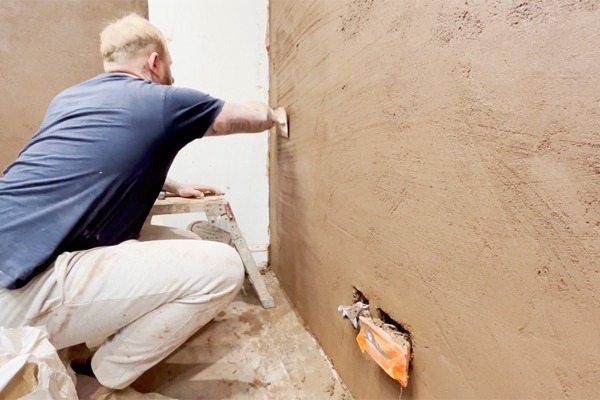
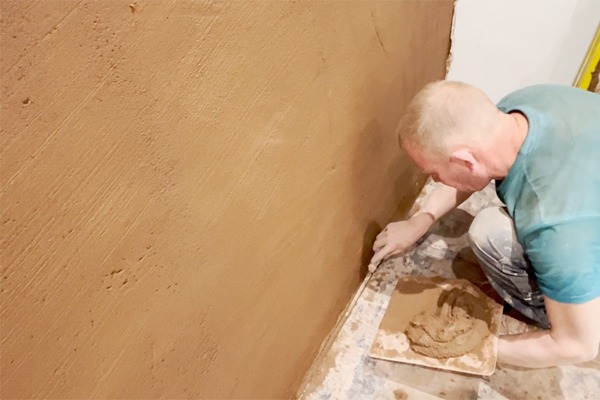
3: Protecting the masonry from humidity, mould and potentially future flood damage
Then they applied 15mm MGN Cocciopesto Deumidificante lime second coat (this lime mix is capable of coping with high humidity) with a lime finish on top (Rasacol MGN finish is a good choice for flood damage restoration work).
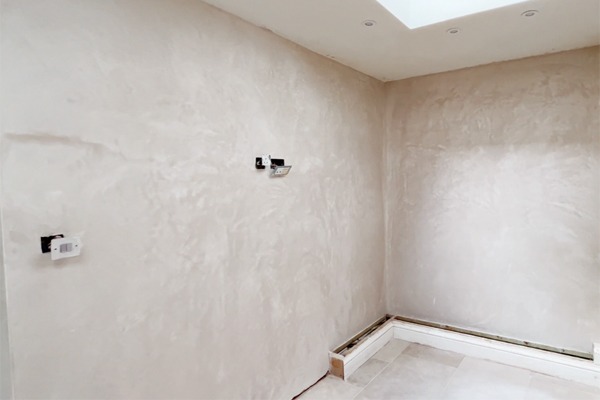
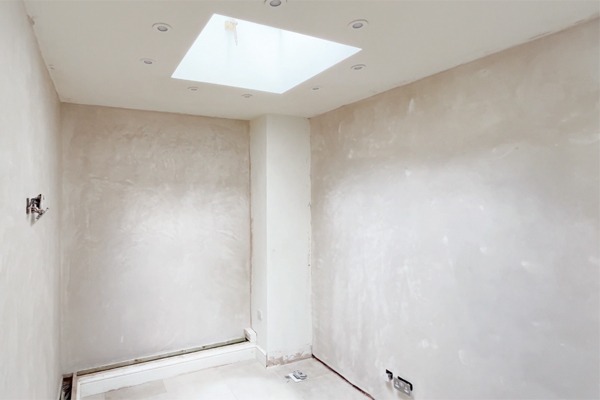
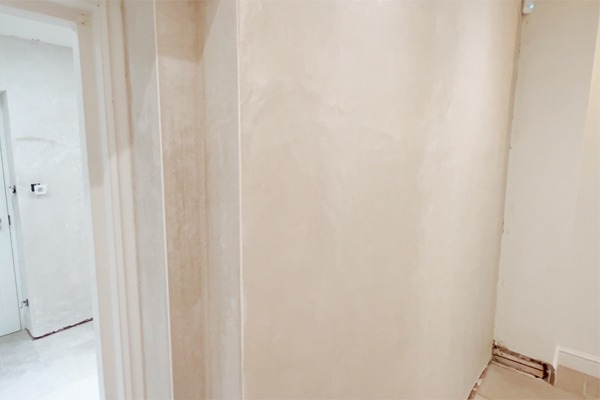
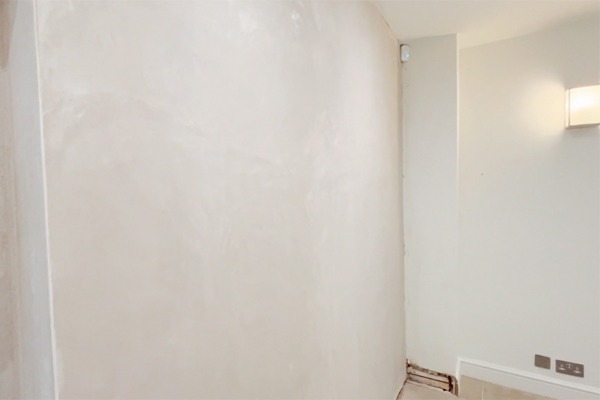
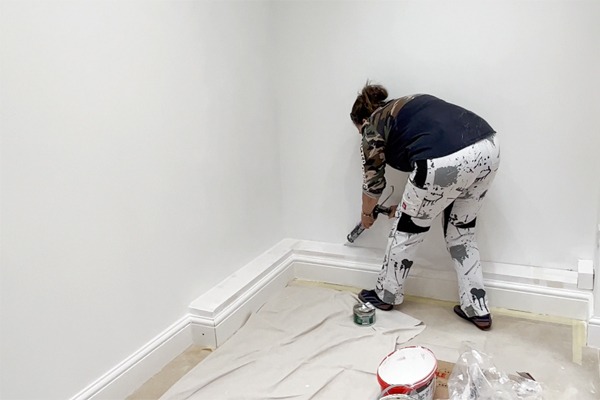
After about a month’s drying period the property was decorated using breathable mineral paints.
LEARN MORE
click on a product
Roman Waterproofing Base
Once set, it keeps moisture and salts in check by turning liquid moisture into a regulated vapour flow
Humidity Regulator
The famous anti-condensation plaster of ancient Roman Baths and wells
Rasacol Lime Finish
Flexible, non-cracking traditional lime finish
In summary
Let me summarise the important points of how to restore an old building after it suffered flood damage:
- Addressing the source of flood (install French drains, sump pumps, soakaways, etc, or non-return valves for drain system failure)
- Remove the damaged plaster and make sure you remove any cement and gypsum plasters
- Repair damaged structural timber elements, such as floor joists or wall plates
- Apply the following lime plasters: 15-25mm MGN Rinzaffo Roman base, 10-15mm MGN Cocciopesto Deumidificante lime second coat, Rasacol lime finish
- Decorate using breathable mineral paints, and use natural pine skirting with breathable wood paint.
This approach ensures that walls can continue to release moisture without cosmetic damage, allowing the property to return to normal use fairly quickly.
Future flood protection
Once the source of the flood has been addressed, the building should no longer experience flooding.
In the event of future flooding, this plastering system does not need to be removed. A fresh lime finish and new decoration will suffice, significantly simplifying any subsequent restoration work.
Flood Damage Restoration – Roman Style! Read More »

